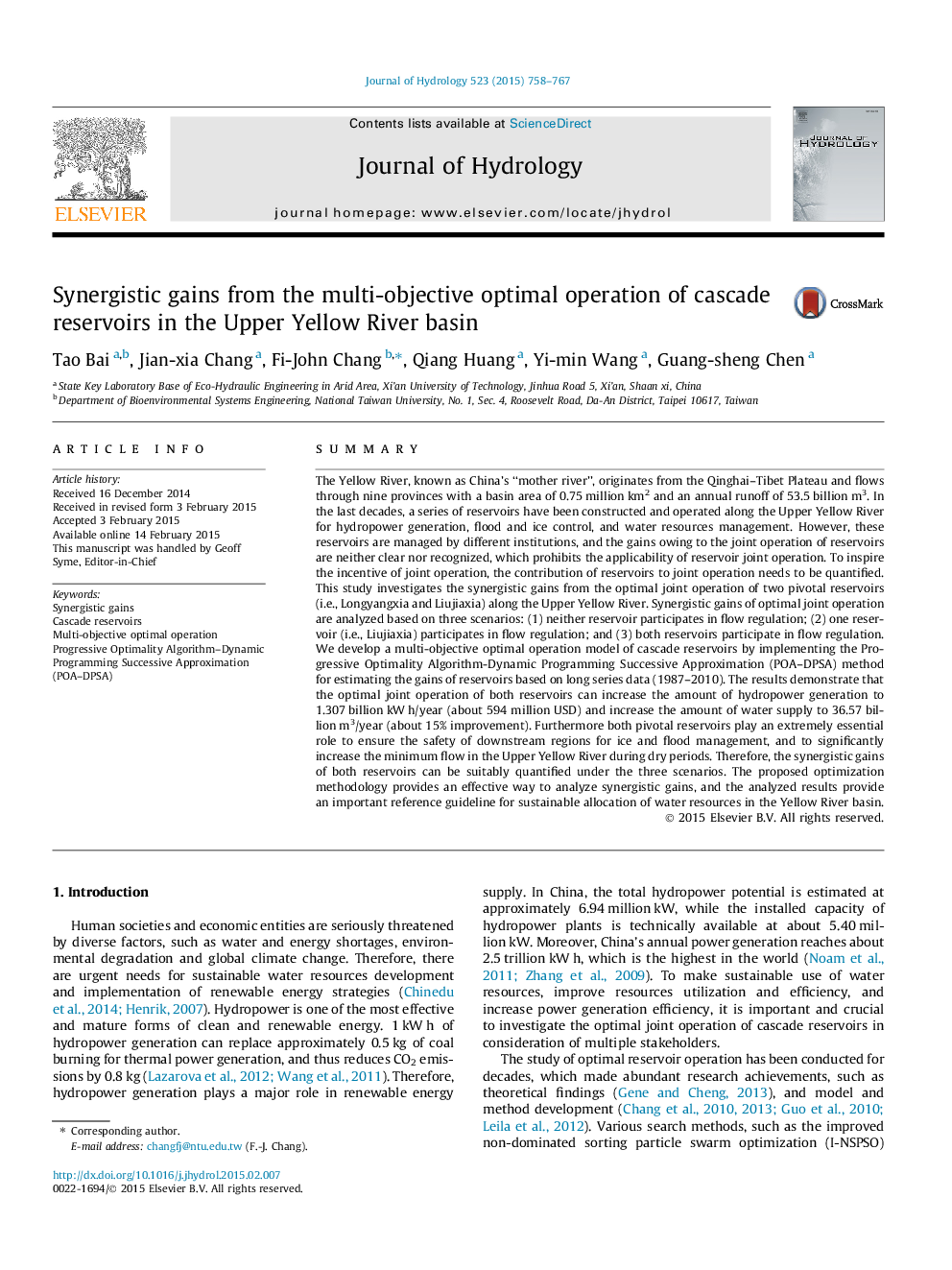| Article ID | Journal | Published Year | Pages | File Type |
|---|---|---|---|---|
| 6411788 | Journal of Hydrology | 2015 | 10 Pages |
â¢A multi-objective optimal operation model of cascade reservoirs is established.â¢Simulation, POA and POA-DPSA are used to construct the optimal operation model.â¢Three scenarios are designed to clarify the synergistic gains of each reservoir.â¢Four kinds of synergistic gains relevant to cascade reservoirs are quantified.â¢Results demonstrate that reservoir joint operation achieves the best performance.
SummaryThe Yellow River, known as China's “mother river”, originates from the Qinghai-Tibet Plateau and flows through nine provinces with a basin area of 0.75 million km2 and an annual runoff of 53.5 billion m3. In the last decades, a series of reservoirs have been constructed and operated along the Upper Yellow River for hydropower generation, flood and ice control, and water resources management. However, these reservoirs are managed by different institutions, and the gains owing to the joint operation of reservoirs are neither clear nor recognized, which prohibits the applicability of reservoir joint operation. To inspire the incentive of joint operation, the contribution of reservoirs to joint operation needs to be quantified. This study investigates the synergistic gains from the optimal joint operation of two pivotal reservoirs (i.e., Longyangxia and Liujiaxia) along the Upper Yellow River. Synergistic gains of optimal joint operation are analyzed based on three scenarios: (1) neither reservoir participates in flow regulation; (2) one reservoir (i.e., Liujiaxia) participates in flow regulation; and (3) both reservoirs participate in flow regulation. We develop a multi-objective optimal operation model of cascade reservoirs by implementing the Progressive Optimality Algorithm-Dynamic Programming Successive Approximation (POA-DPSA) method for estimating the gains of reservoirs based on long series data (1987-2010). The results demonstrate that the optimal joint operation of both reservoirs can increase the amount of hydropower generation to 1.307 billion kW h/year (about 594 million USD) and increase the amount of water supply to 36.57 billion m3/year (about 15% improvement). Furthermore both pivotal reservoirs play an extremely essential role to ensure the safety of downstream regions for ice and flood management, and to significantly increase the minimum flow in the Upper Yellow River during dry periods. Therefore, the synergistic gains of both reservoirs can be suitably quantified under the three scenarios. The proposed optimization methodology provides an effective way to analyze synergistic gains, and the analyzed results provide an important reference guideline for sustainable allocation of water resources in the Yellow River basin.
